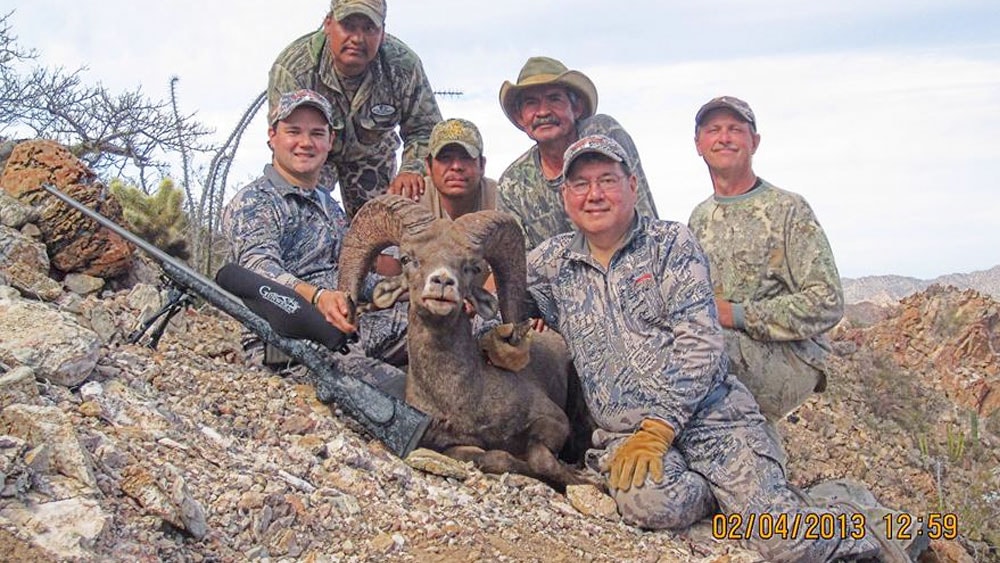It gives me great pleasure to share this story to the WSF community: On February 4, 2013, ten and a half years after having killed my first ram, I completed my FNAWS at age 34, with a wonderful 167” desert bighorn ram from Sonora, Mexico.
My father, George Dennis Jr. and I booked hunts on the Dale Ranch, and were accompanied by guide Mike Loper of Oregon. My dad hunted on the Seri Reservation, while my hunt took place on a large ranch east of Kino Bay in the Punta Chueca area.
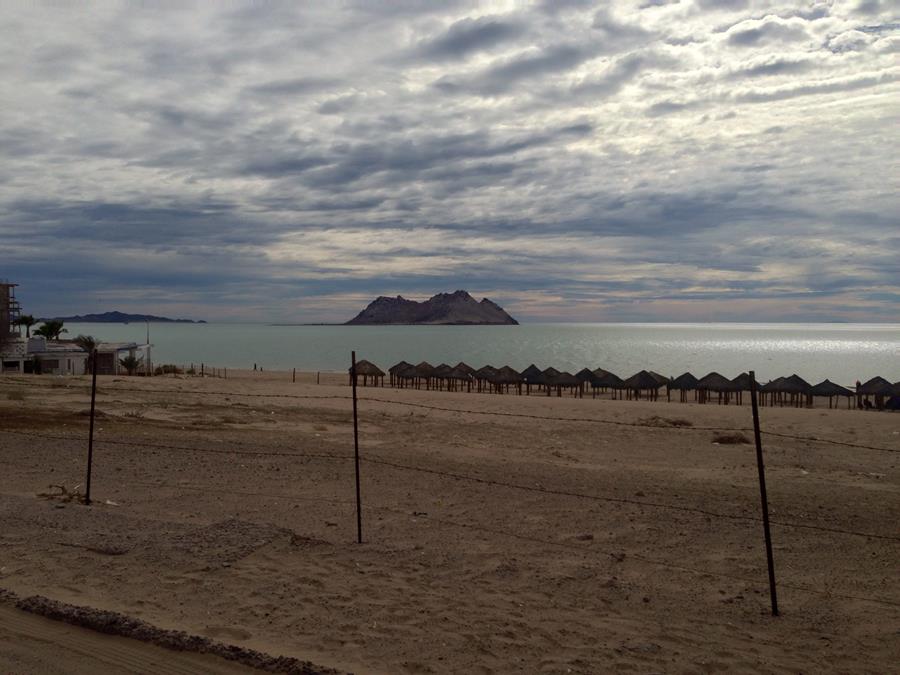
On February 3, after meeting Mike at the Hermosillo airport, Mike, my dad, and I headed to the ranch I was going to hunt. Upon arrival at the ranch house, I learned that my Mexican guides began scouting eight days earlier. That was something unique, as no other sheep hunt I had been on had been pre-scouted prior to my arrival. I was the only sheep hunter that ranch was going to have, so with no prior hunters finding rams, this was something they needed to do. On day 4 of their pre-scouting, the Mexican guides found a nice old trophy ram in the mountains not far from the ranch border. Over the next four days, he moved from mountain to mountain in a five-mile circle.
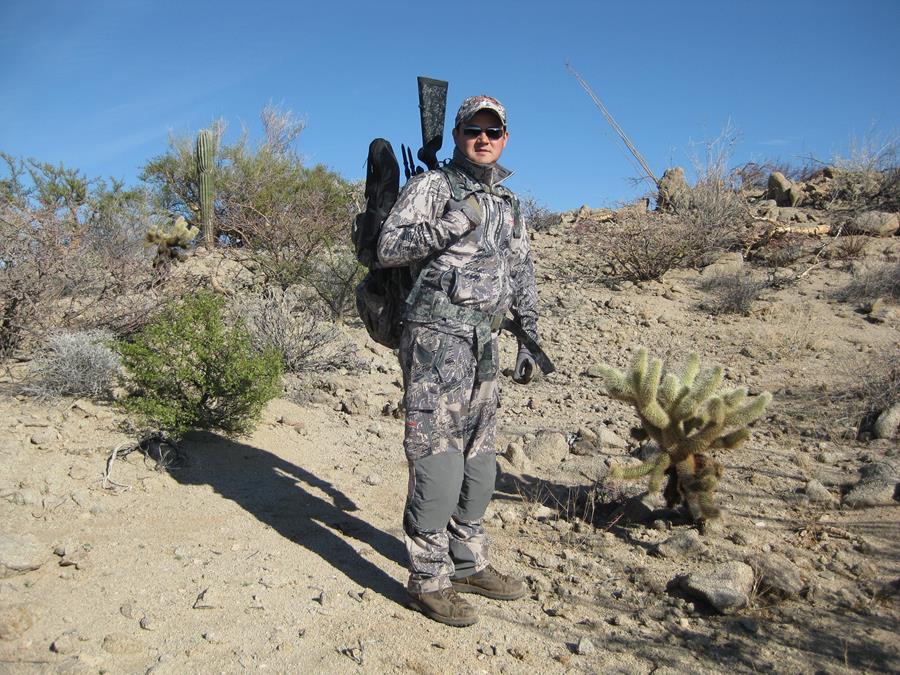
On the first morning of hunting we drove to within a mile of where the ram had been the day before. Another sheep hunting first... driving in a truck! After a nice “warm up” hike to just under 1,100 yards from the bedded ram, we sought cover on the backside of a large hill and set up spotting scopes and binos to glass him. Upon first inspection, I was truly amazed at the dark chocolate color of the big ram’s cape and the mahogany color of his long, curling horns. He was the quintessential “Mexicana” desert sheep in all aspects. Now I’m all for broomed ends on a bighorn, but I noticed this ram had more of a tippy, flared look to his horns. His huge bases were undeniably big even at that distance.
The Mexican sheep guides are definitely some of the hardest working I’ve seen. But they seem to measure success by their speed and effectiveness of getting a ram killed, rather than by emotions or delivering a “shared experience.” Everyone was to stay behind except for the head guide, Rafael, and myself. While in theory that may have been best, that’s not what this hunt was about. This hunt was booked as a chance for my dad and I to kill two sheep, back to back—to be together during the entire hunt. This hunt was about my father, who had been by my side for the other three, to see his son complete his FNAWS. And also about a son, who has a veteran sheep hunter as a dad, to share memories in the field together. Needless to say, we all insisted that my dad come on the final stalk, no ifs, ands, or buts.
We started our initial hike around the mountains and toward the ram at 9:25 a.m. The terrain was rough and steep, coupled with the loose volcanic gravel and thorny flora, which made for a very physical hunt. After almost 2 hours of solid, mostly vertical hiking, we finally got to the top of the mountain directly across from where the ram was bedded. Rafael went over top to find the ram, and laser the distance, which allowed us to catch our breath. After about 10 minutes, Rafael motioned for us to come up. He informed us that the shot was going to be about 475 yards and the ram was bedded. I began looking for a shooting area, but couldn’t find anything. The twisted rocks were going in all directions, and there was no level area for my bipod or me. I scratched out an area just suitable enough, and as I finally settled in behind the rifle and scope, I heard Rafael, in distress, say that the ram was up and walking over the mountain! All I saw was a white butt walk over the top—no shot.
Having left his half curl buddy behind, we figured he’d be back, and not long after, he did exactly that. He presented me with a frontal chest shot at 331 yards. I was calm, the wind was calm, my scope turret was dialed appropriately, and I had plenty of magnification with my scope. I steadied the crosshairs on the center of his chest, and touched it off. My Gunwerks 7mm Mag rocked me back, and the ram out of view. I immediately sought confirmation of impact from my dad and Rafael. Several seconds went by before I heard them confirm he was hit hard, but still on his feet. I chambered another round and got in position again. I finally reacquired him in the scope, and after a minute went by, settled the crosshairs on his shoulder. As he stood broadside, I dropped him in his tracks. After the shot, I opened the bolt, and laid back and tried to process all that had just occurred in the matter of a few minutes. I could hear my father lightly crying behind me. Rafael said “Many congratulations,” and I just lay there, overcome to my core. Emotions ran deep.
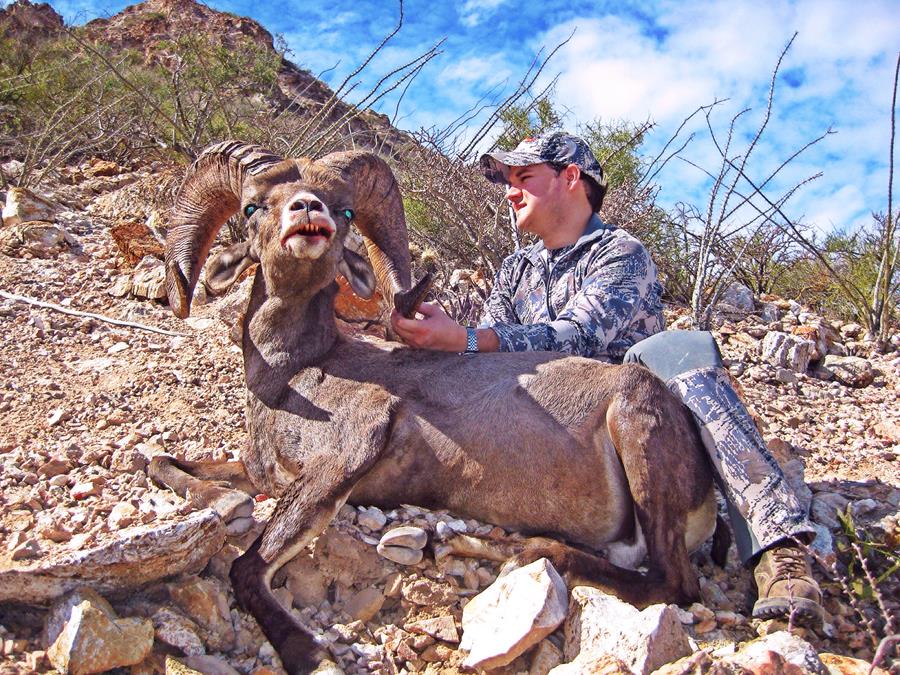
After some celebratory hugs, handshakes, and high fives, we began the task of retrieval. A rough descent took us down one mountain, across the bottom, and up the next toward the fallen monarch. It took us over an hour of climbing to go those 331 horizontal yards. I firmly believe that the hunter should always be the first person to touch the animal. But, again the Mexican guides don’t follow this sense of emotion and were all there holding the head and hollering at my dad and me as we completed the final climb to the ram.
My ram was more than I dreamed of. He was old, had huge bases, and long horns. He had a Roman nose, but no calluses or missing hair. His cape was thick and dark. He was perfect, and in magnificent shape. I cried a bit when I first saw him. Having collected the other three species of sheep, it’s quite remarkable to hunt the desert species. For me, the incredible difference in terrain, environment, and even the style of hunting was just as important as the experience of the harvest.
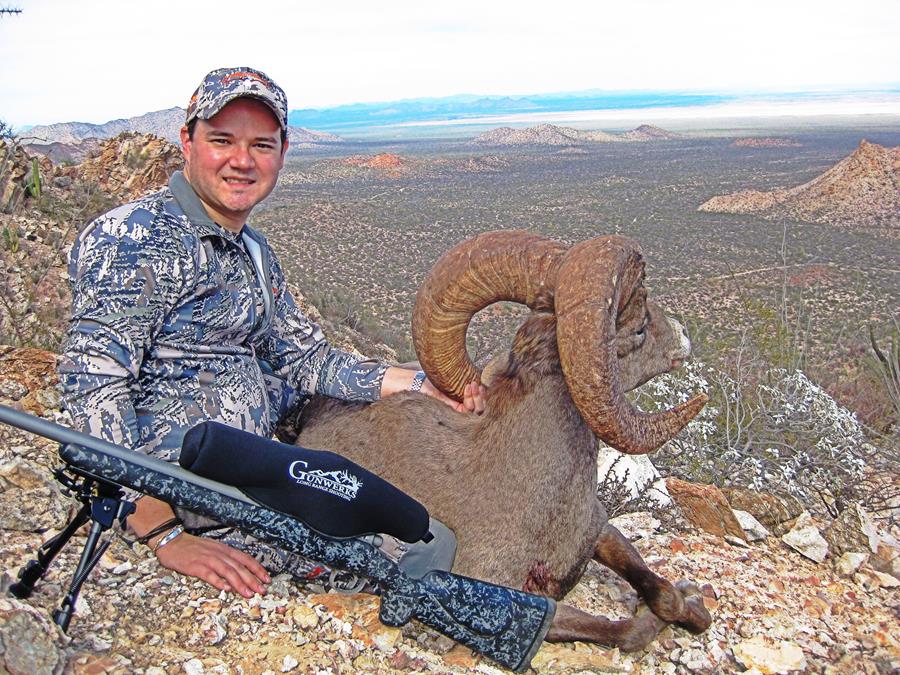
I feel so lucky and blessed to have taken all four species of North American wild sheep. I want to thank all my guides, my success is ultimately owed to them. Many thanks also to my wife and son, who tolerate my time away from home and support me in my passion. And lastly, to my father. He has been on 20 North American sheep hunts including mine. His wisdom, guidance, help, and support have made my impossible dream a reality.
